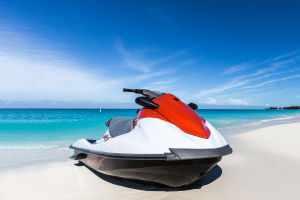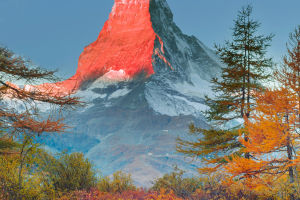The Teide Observatory (Observatorio del Teide) is situated at an altitude of 2,390 meters (7,850 feet) on the slopes of Mount Teide, the highest peak in Spain.
This strategic location, combined with the island's clear skies and low light pollution, makes it an ideal site for astronomical research.
Established in 1964, the observatory is operated by the Instituto Astrofísico de Canarias (IAC) and hosts a variety of telescopes that are used for both solar and nighttime observations.
Getting There
Location
The observatory is located about 45 minutes from the nearest major town, La Orotava. The drive offers stunning views of the surrounding landscape, including volcanic formations and lush forests.
Transportation Options
• Car Rentals: Renting a car provides the most flexibility for your visit. Ensure you have GPS or a map to navigate the winding roads.
• Public Transport: Limited bus services operate from major towns to the observatory, but schedules may vary, so check in advance.
• Guided Tours: Many tour operators offer packages that include transportation, making it easy to visit without the hassle of driving.
Facilities and Equipment
Telescopes
The observatory features several state-of-the-art telescopes, including:
• The Gran Telescopio Canarias (GTC): The world's largest single-aperture optical telescope, with a diameter of 10.4 meters. It is primarily used for deep-space observations.
• The Solar Telescope: Specially designed for solar observations, this telescope allows researchers to study solar phenomena such as sunspots, solar flares, and coronal mass ejections.
• The MAGIC Telescopes: These are two of the most advanced telescopes for gamma-ray astronomy, used to study high-energy cosmic phenomena.
Visitor Center
The visitor center offers educational exhibits about astronomy, the solar system, and the technology used in modern telescopes. Interactive displays and models help demystify complex astronomical concepts, making them accessible to visitors of all ages.
Guided Tours
The observatory offers guided tours that provide an in-depth look at its operations. These tours typically include:
• Introduction to Astronomy: A brief overview of the history of astronomy and the significance of the observatory.
• Telescope Visits: A chance to see some of the telescopes up close and learn about their functions and the research conducted with them.
• Solar Observation: Using specialized solar telescopes, visitors can safely observe the sun and its features, such as sunspots and solar flares.
• Stargazing Events: In addition to daytime tours, the observatory occasionally hosts stargazing events during the night. These events allow visitors to observe celestial objects such as planets, stars, and galaxies through powerful telescopes, guided by expert astronomers.
Guided tours are available in Spanish, English, German, French and so on. Admission for children under 16 is free, €21.00 for adults. Children under 8 are not allowed to participate in the daytime visit.
Stargazing Events
In addition to daytime tours, the observatory occasionally hosts stargazing events during the night. These events allow visitors to observe celestial objects such as planets, stars, and galaxies through powerful telescopes, guided by expert astronomers.
Important Tips for Visitors
• Reservations: It is essential to book your tour in advance, as spots fill up quickly, especially during peak tourist seasons.
• Dress Appropriately: The temperature can drop significantly at high altitudes, so dress in layers and bring a warm jacket, even in summer.
• Travel Considerations: If you're driving, be aware that the roads can be winding and steep. Allow plenty of time for travel to avoid missing your tour.
• Altitude Awareness: Visitors may experience altitude sickness due to the elevation. Stay hydrated and take it easy if you feel dizzy or lightheaded.
Conclusion
A visit to the Teide Observatory is not just an opportunity to learn about astronomy; it is an experience that connects you with the wonders of the universe. Whether you are a seasoned astronomy enthusiast or a curious traveler, the observatory offers something for everyone. With its stunning location, cutting-edge research, and engaging educational programs, it promises to be a highlight of your time in Tenerife. Don't miss the chance to explore the cosmos from one of the best vantage points on Earth!


